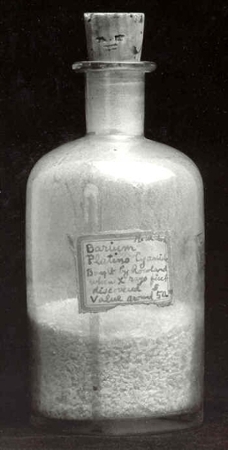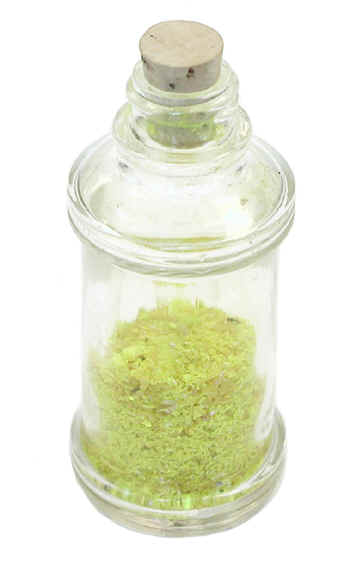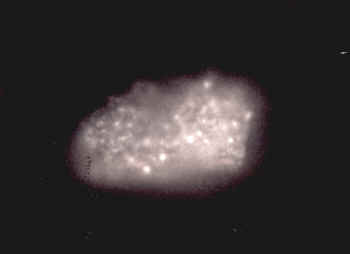Robert Wood's Barium Platinocyanide (late 1800s)


In a sense, barium platinocyanide was the first radiation detector. It was a glowing screen of barium platinocyanide that alerted Wilhelm Rontgen to the fact that some mysterious ray was being produced by a gas discharge tube that he was using to investigate cathode rays. He named this mysterious new type of radiation: X-rays.
This sample of barium platinocyanide is part of a lot that was purchased in the late 1800s by Sidney Rowland of Kings College in London—Rowland is often credited as having invented the first focus tube (although William Crookes has a stronger claim) and as being the first British radiologist. Rowland then gave it to the great Robert Woods of Yale University.
The bottle at Yale University from which this sample was obtained is shown in the photograph above right. It would seem that the label was written by Robert Woods himself since his name is located in the upper right corner.
Radium had not been discovered at the time that this barium platinocyanide was produced and since the two are very similar chemically, the barium platinocyanide is contaminated with measurable quantities of radium. The photo to the right shows a radiographic image I produced by sprinkling some of the barium platinocyanide on photographic film.

Read a story about Rontgen, the invisible light (X-rays) and barium platinocyanide.
For an informative discussion about barium platinocyanide, and Roentgen's barium platinocyanide in particular, see "Roentgen and the New Light—Roentgen's Moment. Part 3: The genealogy of Roentgen's Barium Platinocyanide Screen" by D. Patton. Invest. Radiology 28 (10): 954-961; 1993.
Donated by Yale University courtesy of Howard Seliger.
